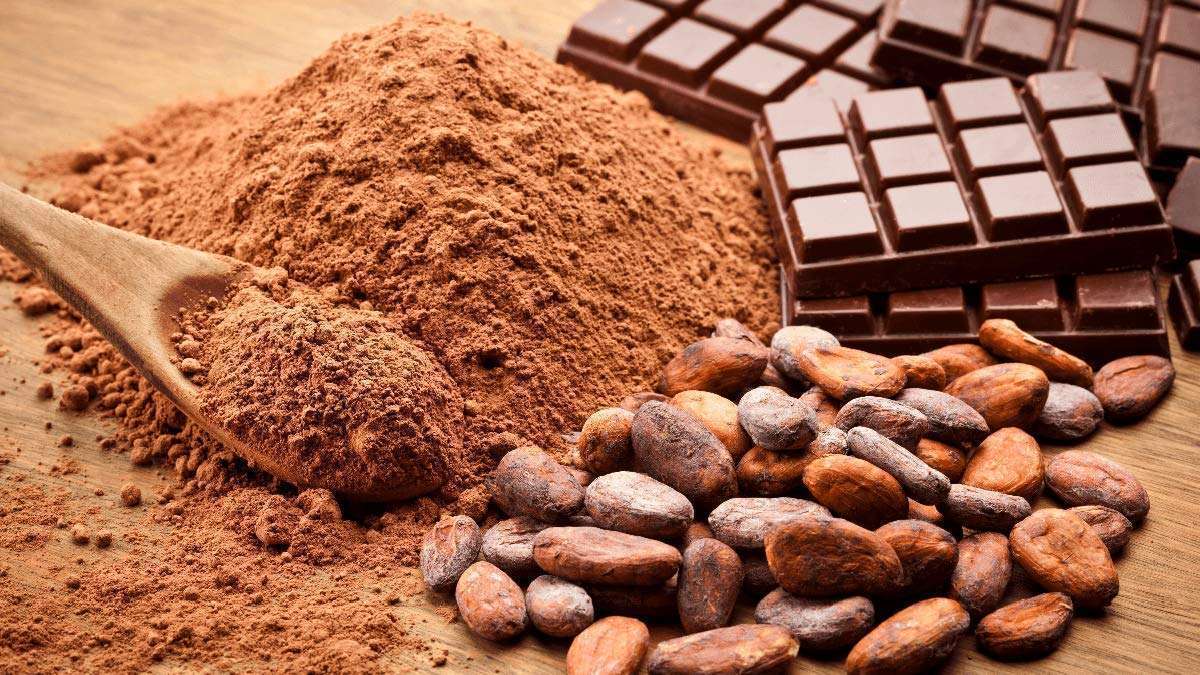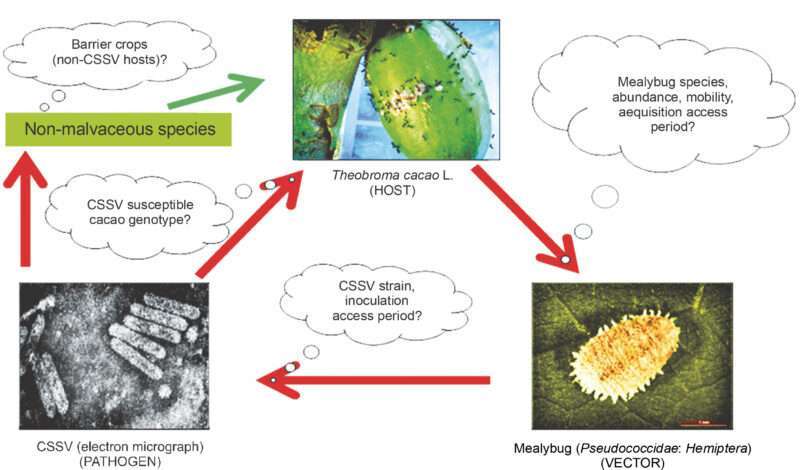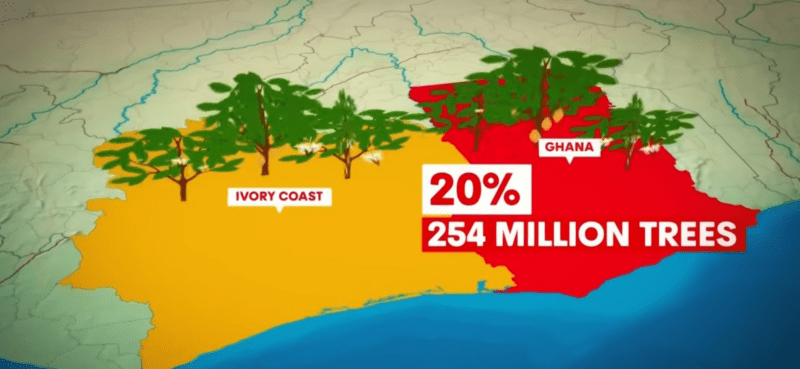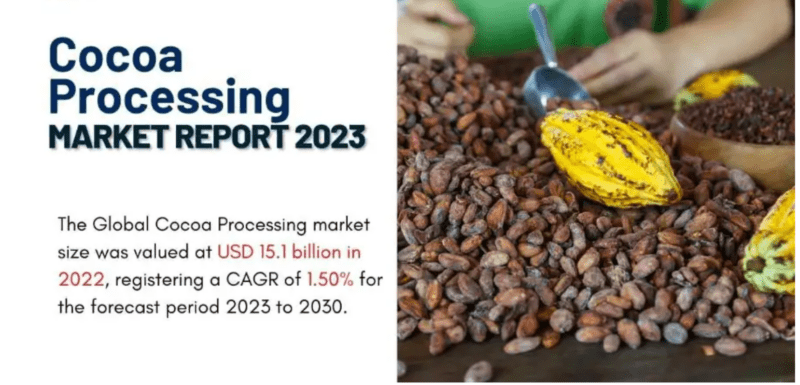Chocolate Crisis: The Sweet Trade World Loves!

Chocolate Crisis: The Sweet Trade World Loves!
If you’ve recently gone chocolate shopping, you might have observed that your favorite products are getting smaller or more expensive, or occasionally both. The cost of cocoa has nearly doubled and is at its highest point in the previous four months. The global shortage has been building for years. Although it’s a sweet treat and sometimes an inexpensive luxury, chocolate lovers may soon taste something bitter due to the growing price of cocoa.
The individuals who are impacted are chocolate lovers who wish to purchase premium chocolate at deeply discounted costs. An incredibly vulnerable crop is cocoa beans.
Most of the farms in West Africa are under 10 acres. The farmers who cultivate them earn less than $2 per day. This has come about because of a long-term underpayment of farmers. Also, rising production costs.
Chocolate lovers are in shock with the threatening virus affecting the world’s supply of the sweet trade. Every year 7.5 million tons of chocolate are developed. But now supplies are under threat from a virus spread by insects called Mealybugs.
This tiny insect called mealybug, is a white insect that has already claimed the lives of 250 million cacao trees and is now spreading like a devastating virus in Ghana and Ivory.

When did it start?
Within the epidemic, the disease began to spread. The plants shrivel and perish due to the Cacao Swollen Shoot Virus Disease. Because there was less chocolate available, prices increased.
Ghana and the Ivory Coast in West Africa produce more than half of the world’s chocolate, but up to 20% of Ghana’s crops—roughly 254 million trees—have been impacted. Farmers were left with no choice but to burn them.

Our favorite chocolate is in grave danger
Ghana is now talking about how difficult it is to eradicate the virus, and farmers are being forced to remove the infected trees with pesticides. Although vaccination is an option, it is not as practical given its high cost. Vaccinated trees also experience a decrease in productivity.
The study suggests that the best way to stop bug infestation is to plant trees at strategic intervals. Vaccinating yourself to develop hard immunity is another option, but if a solution isn’t found, you should be ready for a shortage of chocolate.
Local candies changing their business strategies due to the worldwide scarcity of cocoa
To increase revenue, small confectionaries in the area are choosing to provide experimental services like chocolate-making workshops instead of just selling chocolates. This indicates that their profit margins are being squeezed by the rapidly rising prices in Coco.
The producer of chocolate only makes roughly 600 bars a month. It is currently paying twice as much for raw cocoa beans that are later used to make sweet treats as it did at the beginning of the year. The bad news is that they will soon be paying more because, according to their suppliers, they already have to pay more than the higher price they were previously paying.

Confectioners ceased to give freebies, discounts, or offers. Instead of only selling chocolates, local small confectioneries in Singapore are redefining their business models to include experiential services like workshops for creating chocolate. Due to the rapidly rising prices in the cocoa market, these smaller players are seeing more and more pressure on their profit margins. The two biggest cocoa producers in the world, Ghana and Ivory Coast, are running out of cocoa.
A chocolate-free world? Analyzing the world’s cocoa crisis
The demand for chocolate is at an all-time high, but the cocoa supply, which is the essential ingredient in this delectable treat, is finding it difficult to keep up with the demand. As a result, the production of chocolate is experiencing difficulties, with global consequences. Unlike most agricultural products, coco was regarded as a poor man’s crop, so it never became a plantation industry.
Because cocoa was seen by millions of African farmers as their only means of escaping poverty, there was an abundance of the crop and low prices as a result. Nearly 75% of the world’s cocoa supply is produced in four West African nations: Nigeria, Ghana, Cameroon, and the Ivory Coast. It is predicted that the stock-to-consumption ratio will fall to 30%, the lowest level since 1985. Observers of the industry predict a 2,79,000 metric ton shortfall in the world market for cocoa for the 2023–2024 season.

Globally, production has a major impact on agricultural patterns and yields. Black pod disease, a fungal infection that causes cocoa pods to rot, has spread due to heavy rains. In extreme cases, the disease results in the pods rotting because it causes dark, water-soaked lesions on them. It may result in branch dieback and, eventually, the death of the tree.
This has jeopardized both the quality and quantity of coca crops, raising concerns about a third consecutive year of deficit for the 2023 24 season. The virus has impacted approximately 20% of the Ivory Coast’s cocoa crop this season.
India is also seeing changes in the patterns of production. At the central cocoa marketing and processing cooperative limited Mangaluru, the first harvesting season previously produced between 4000 and 4500 tons of beans. But as of right now, only 3,000 tons are anticipated to be purchased from Andhra Pradesh.
The chocolate industry in India is growing at an impressive rate, driven by both local and global flavors and trends, despite the country’s comparatively low cocoa production. To create premium chocolate that tantalizes consumers’ palates, chocolate manufacturers are experimenting with new ingredients and methods. provides chances for economic expansion and cross-cultural interaction in addition to a variety of chocolates.



